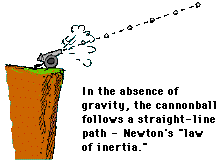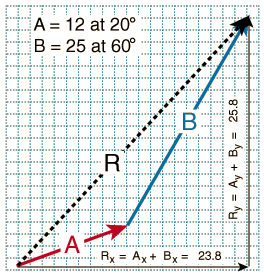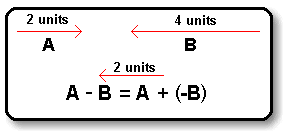1. If you drive west at 20 km/h for one hour, then drive east at 15 km/h for one hour, your net displacement will be
(A) 5 km east.
(B) 35 km west.
(C) 35 km east.
(D) 5 km west.
2. If the acceleration vector of a body is perpendicular to the velocity vector, which of the following must be true?
(A) The speed is changing.
(B) The direction is changing.
(C) Both the speed and the direction are changing.
(D) The direction is not changing.
3. A vector of magnitude 10 has an angle with the positive x-axis (east) of 120 degrees. What are its components?
(A) 5 and 8.7
(B) -5 and 8.7
(C) 5 and -8.7
(D) -5 and -8.7
4. A vector of magnitude 10 has an angle with the positive x-axis (east) of -60 degrees. What are its components?
(A) 5 and 8.7
(B) -5 and 8.7
(C) 5 and -8.7
(D) -5 and -8.7
5. A vector has components x = 6 m and y = 8 m. What is its magnitude and direction?
(A) 10 m and 30 degrees
(B) 14 m and 37 degrees
(C) 10 m and 53 degrees
(D) 14 m and 53 degrees
6. A vector has components x = -2 m and y = -2 m. What is its direction (angle with respect to east)?
(A) 45 degrees
(B) 135 degrees
(C) 225 degrees
(D) -45 degrees
7. Three vectors have components (x,y): A = (2,3), B = (4,-7) and C = (-6,-3). What is the magnitude of the resultant vector (D = A + B + C)?
(A) -7
(B) 17.7
(C) 15
(D) 7
8. Three vectors have components (x,y): A = (2,3), B = (4,-7) and C = (-6,-3). What is the magnitude of the resultant vector (D = A - B - C)?
(A) 13.6
(B) 15
(C) 52
(D) 7
9. Suppose that several projectiles are fired on level ground. Which one will be in the air longest?
(A) The one with the farthest range, R.
(B) The one with the highest maximum elevation, h.
(C) The one with the greatest initial velocity.
10. Which of the following does not affect the range of a projectile?
(A) V0 Initial Speed
(B) θ0 Launch Angle
(C) y0 Initial Height
(D) x0 Initial Horizontal Position
11. Which of the following must be zero for a projectile to achieve its maximum range?
(A) Vxf
(B) Vyf
(C) xf
(D) yf
12. Which of the following must be zero for a projectile to be at its maximum height?
(A) Vxf
(B) Vyf
(C) yf
(D) xf
13. Taking "up" as positive at the highest point, the acceleration of a projectile is
(A) -9.8 m/s2
(B) 0 m/s2
(C) +9.8 m/s2
14. If the sum of two vectors equals zero, the magnitude of their difference is
(A) equal to the magnitude of either one.
(B) equal to twice the magnitude of either one.
(C) less than twice the magnitude of either one.




















































